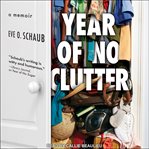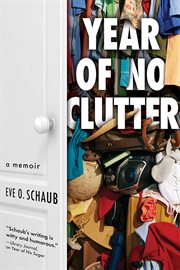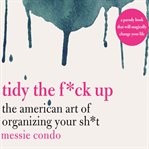Review by Booklist Review
Owning your mess is everywhere, from episodes of Hoarders to Marie Kondo books. Schaub (Year of No Sugar, 2014) admits she has a real problem letting go of stuff. Her quest to reclaim the giant, junk-filled Hell Room in her home is aided by her two daughters, who seemingly represent the two parts of her brain, catch-and-release and keep-it-forever. While musing on what led her to save her fifth grade report card and a long-deceased rodent in a box, Schaub weaves in thoughtful cultural references, pointing out that while the ability to have too much stuff is a phenomenon of privilege, it also reflects how far we'll go to put off painful decisions. She describes the pain of how much messier her entire house got until the boxes and bags of trash and donations were hauled away and questions, at what point . . . do we hold on to our past so tight that we risk strangling it to death? Her recognition that clutter of the mind is as real as tangible clutter makes this a personal and powerful read.--Howerton, Erin Downey Copyright 2017 Booklist
From Booklist, Copyright (c) American Library Association. Used with permission.
Review by Publisher's Weekly Review
Schaub (Year of No Sugar), a lifelong collector of countless possessions, decided the time had come for her to take on what she has dubbed "The Hell Room" in her house, which was so full of discarded items and such a source of anxiety that she rarely went near it. She thoughtfully and humourously recounts her fascinating project, getting the whole family involved as she figured out whether she was messy and overwhelmed, a hoarder, or something in between. Schaub raises a number of insightful questions: Are you a hoarder if you have a place for everything, like William Randolph Hearst, who built a castle for his prized objects and is seen as a visionary? If, like Andy Warhol, you have a collection of toenail clippings and boxes of old plane tickets and newspapers that he called cardboard time capsules, are you artistic or eccentric? According to the American Psychological Association, 2%-5% of the population are hoarders, and many have other mental health issues, including Schaub, who takes medication for OCD. Those who, like Schaub, are looking for a way to declutter that encompasses finding homes for discarded items rather than simply going to a Dumpster, will appreciate Schaub's judgment-free, instructive, funny approach to being a "domestic belonging preservationist" with a place for everything that matters. (Mar.) © Copyright PWxyz, LLC. All rights reserved.
(c) Copyright PWxyz, LLC. All rights reserved
Review by Kirkus Book Review
How a self-identified "amateur hoarder" managed to rid her life of the overabundance of "stuff" that littered her home.Schaub's (Year of No Sugar, 2014) "Hell Room" was the largest room in her homeand also the source of her greatest embarrassment. In it, she kept everything from childhood drawings and college telephone records to "dried, hacked-up hairballs" and "rodent fragments." Eager to rid herself of the burden the Hell Room represented, the author decided to take one year and perform a "clutter-ectomy." However, she soon discovered that cleaning up decades of accumulated belongings was far more difficult than she could have imagined. Almost everything in the Hell Room, including the rodent fragments, had significance for her. Immediately, she began fearing that her choices would lead to regret. Even after she grudgingly admitted to herself that she might be a "hoarder in the making" and had thrown out or given away boxes and bags of old and/or unusable belongings, large piles of stuff remained. Despairing, she writes, "it felt as if the Hell Room were fighting back." As she continued sorting through her collection, Schaub confronted some of her past selves, like the "hippie" and the "punk." Slowly, she began to realize that she had been collecting things as a way of defining herself and fending off mortality; to let go of things was to let go of her past and who she had been. In the end, a much-chastened and more self-aware author managed to almost completely transform her Hell Roomand the rest of her homeinto a place where free space became as valued as things had once been. Part memoir and part how-to guide, Schaub's book casts a lightheartedly humorous light on the First World obsession with acquisition while showing readers that less truly can be more. A wry account of the author's quest to "pitch, plunder, recycle, and sell." Copyright Kirkus Reviews, used with permission.
Copyright (c) Kirkus Reviews, used with permission.



